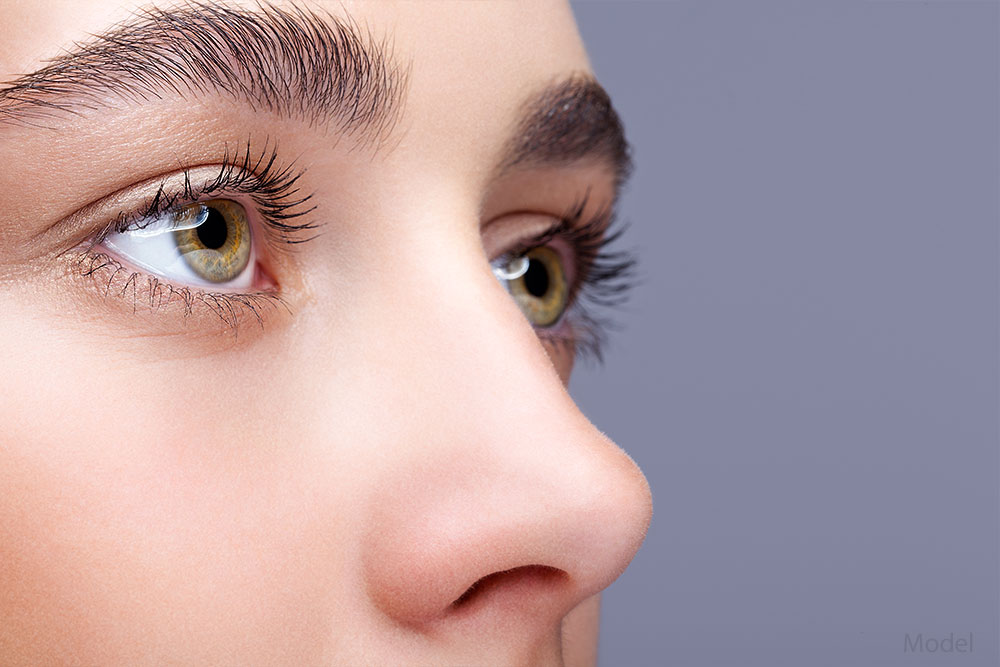Nose Surgery (Rhinoplasty) in Huntsville, AL
Nose surgery also known as “rhinoplasty” is a popular surgical procedure designed to aesthetically enhance the size and shape of the nose and/or correct breathing problems associated with the nasal passage.
As the central feature of the face, the nose plays a significant role in determining overall facial harmony. Rhinoplasty helps create a nose that is in balance with the rest of the face by correcting the unsatisfactory results of genetic deformities or traumatic nasal injuries.
How Can Rhinoplasty Improve My Nose?
Rhinoplasty is one of the most popular procedures in all of plastic surgery because of its ability to enhance facial harmony. A well balanced and aesthetically proportionate nose will enhance your appearance and increase your confidence. Rhinoplasty can also alleviate problems associated with nasal breathing.
When formulating his operative plan, Dr. Knowling has an appreciation for the patients’ anatomy and their aesthetic concerns. Cosmetic or reconstructive nasal surgery can effectively achieve the following:
- Reduce the overall size of the nose
- Smooth out bumps and/or depressions on the bridge of the nose
- Narrow the bridge of the nose
- Change the size or shape of the tip of the nose
- Widen or narrow the size of the nostrils
- Adjust the angle between the nose and upper lip
- Straighten the septum to improve breathing
How Is Rhinoplasty Performed?
Open Rhinoplasty
- Performed under general anesthesia
- Incision is made across the columella (between the nasal openings)
- Allows the most visibility for Dr. Knowling during the procedure
- Alterations that improve nasal breathing can be performed at the time of cosmetic rhinoplasty.
Closed Rhinoplasty
- Performed under either intravenous sedation or general anesthesia
- Incisions are made on the inside of the nose
- Shorter surgical and recovery time
How Long to Recover From Rhinoplasty?
Rhinoplasty recovery is a process. Most patients will need about one week of downtime to recover from rhinoplasty. At this time, they generally feel good enough to return to work or school; however, there may still be some bruising around the nose and eyes. Strenuous exercises and physical activities should be avoided until after Dr. Knowling determines your nose has healed properly at a follow-up appointment.
While the external bruising and swelling should subside within a few weeks, internal swelling will be present for much longer (from six months to one year). Fortunately, the only people to know this will be yourself and your plastic surgeon.
When Will I See My Nose Surgery Results?
The results of your nose surgery will become more evident as swelling goes down over the coming weeks and months. It may take up to a year to see the final results of your rhinoplasty.
How Long Does a Rhinoplasty Last?
Rhinoplasty is considered to be a permanent procedure as your results will not revert to the nose you once had. Patients should remember that their noses, like the rest of their faces, will continue to age and some
How Much Is Rhinoplasty in Huntsville, AL?
Your rhinoplasty is tailored to your specific needs. Unfortunately, because of that, it is impossible to predict your rhinoplasty cost until after you have met with Dr. Knowling for a consultation. Nose surgery cost is affected by many factors, including the techniques used, anesthesia, facility fees, geographical location, and surgeon’s fees.
Dr. Knowling and his team will provide you with an accurate cost estimate once a surgical plan has been established. Financing options are available.
Does Insurance Cover Rhinoplasty?
Because rhinoplasty is most often chosen for aesthetic purposes, insurance companies view it as an elective procedure, which is not covered. However, if you are undergoing this procedure after a facial injury that has resulted in significant breathing and functional difficulties, there may be a chance that your insurance will contribute. This is why it is important to reach out to your insurance company to see if they will help financially.
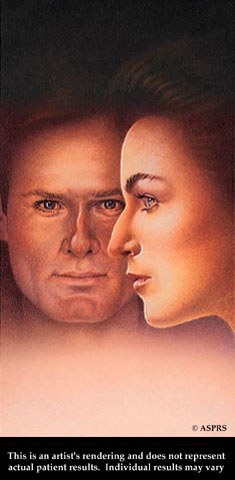 Rhinoplasty can be performed to meet aesthetic goals or for reconstructive purposes – to correct birth defects or breathing problems.
Rhinoplasty can be performed to meet aesthetic goals or for reconstructive purposes – to correct birth defects or breathing problems.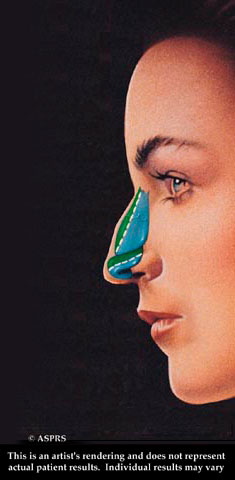 Incisions are made inside the nostrils or at the base of the nose, providing access to the cartilage and bone, which can then be sculpted into shape.
Incisions are made inside the nostrils or at the base of the nose, providing access to the cartilage and bone, which can then be sculpted into shape.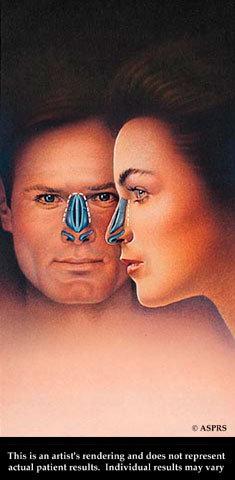 The surgeon removes a hump using a chisel or a rasp, then brings the nasal bones together to form a narrower bridge. Cartilage is trimmed to reshape the tip of the nose
The surgeon removes a hump using a chisel or a rasp, then brings the nasal bones together to form a narrower bridge. Cartilage is trimmed to reshape the tip of the nose The surgeon removes a hump using a chisel or a rasp, then brings the nasal bones together to form a narrower bridge. Cartilage is trimmed to reshape the tip of the nose.
The surgeon removes a hump using a chisel or a rasp, then brings the nasal bones together to form a narrower bridge. Cartilage is trimmed to reshape the tip of the nose.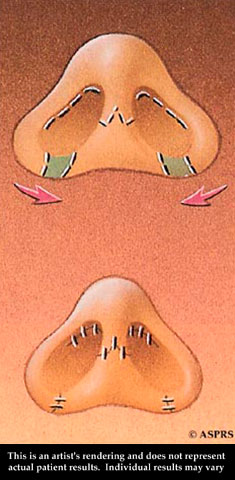 If the nostrils are too wide, the surgeon can remove small wedges of skin from their base, bringing them closer together.
If the nostrils are too wide, the surgeon can remove small wedges of skin from their base, bringing them closer together.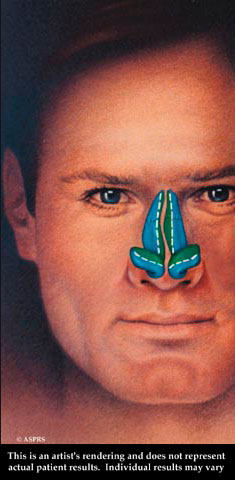 To improve the nasal airway, the shape of position of the septum may be altered. Or, the deviated portion of the septum may be partially removed.
To improve the nasal airway, the shape of position of the septum may be altered. Or, the deviated portion of the septum may be partially removed.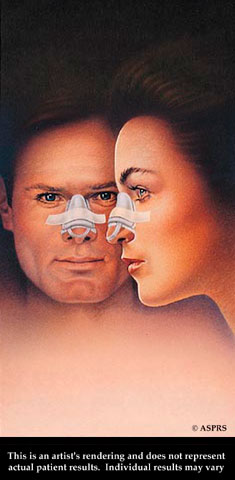 A splint made of tape and an overlay of plastic, metal, or plaster is applied to help the bone and cartilage of the nose maintain their new shape.
A splint made of tape and an overlay of plastic, metal, or plaster is applied to help the bone and cartilage of the nose maintain their new shape.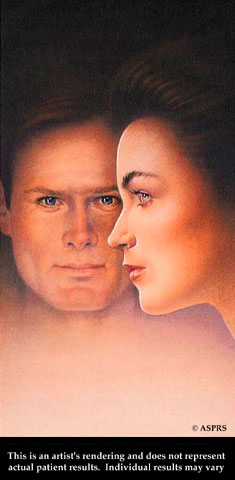 After surgery, the patient has a straighter bridge, a well defined nasal tip, and an improved angle between the nose and upper lip.
After surgery, the patient has a straighter bridge, a well defined nasal tip, and an improved angle between the nose and upper lip.Rhinoplasty FAQ
A: Rhinoplasty is a cosmetic nasal surgery that corrects or enhances the shape and structure of the nose after a facial injury or due to dissatisfaction of your nasal appearance. Rhinoplasty (nose surgery) can be performed to straighten a crooked nose, make the nose appear smaller, or make the nose appear larger.
A: Rhinoplasty can be performed once your nose has fully developed. This usually happens around the ages of 15 or 16 for girls, and 16 or 17 for boys. While this surgery can be performed on teenagers (and there is no age cap), the most common age for this surgery is between the ages of 20 and 55.
A: Rhinoplasty uses an open or closed method. Closed rhinoplasty can be performed for many surgeries and allows your surgeon to shave cartilage and bone and reshape the structure. Open rhinoplasty is usually reserved for more extensive corrections as the added incision across the columella allows for greater visibility of the nasal structure.
A: A deviated septum occurs when the septum (the cartilage that separates the two nostrils) is crooked, resulting in nostrils of different sizes. While this may not seem significant, a deviated septum can complicate breathing and even disrupt sleep cycles; therefore, it is beneficial to address. This deviation can be corrected during a rhinoplasty procedure with a technique known as septoplasty. Here, the septum will be straightened and adjusted to allow for better airflow.
A. No, Anesthesia is administered throughout the entire procedure, so patients do not have to worry about feeling any pain or discomfort during surgery.
A. Nose surgery generally takes two or three hours to perform, although the exact amount of time needed for surgery will depend on the specific corrections that need to be made.
A. Rhinoplasty is usually performed on an outpatient basis. However, because you will still be under the effects of anesthesia after surgery, you will need someone to drive you home and assist you the day of surgery.
A. Surgical procedures that require incisions generally leave some extent of scarring. However, incisions will be placed inside of the nose or on the columella, (between the nostrils) to ensure scarring is as inconspicuous as possible.
A. Stitches are typically removed six or seven days after surgery.
A: Many patients combine rhinoplasty with other plastic surgery procedures for more transformative results. The nose is your central facial feature and plays a significant role in balance; however, some patients find that the best way to ensure or create balance and facial harmony is to combine their nose surgery with a cheek implant or a chin implant for better definition.
Patients who choose rhinoplasty later in life can also choose to add an anti-aging plastic surgery, such as a facelift or eyelid lift.
A: Some patients experience complications during the healing process even though everything went well during the surgery. These changes can be addressed with a second rhinoplasty procedure (a revision rhinoplasty), but they should not be considered for at least a year after your initial nose surgery. This is because it can take up to a year for all internal swelling to subside.
Have additional questions about the Nose Surgery (Rhinoplasty) in Huntsville, AL procedure? Schedule a Consultation with Dr. Knowling for further information.


